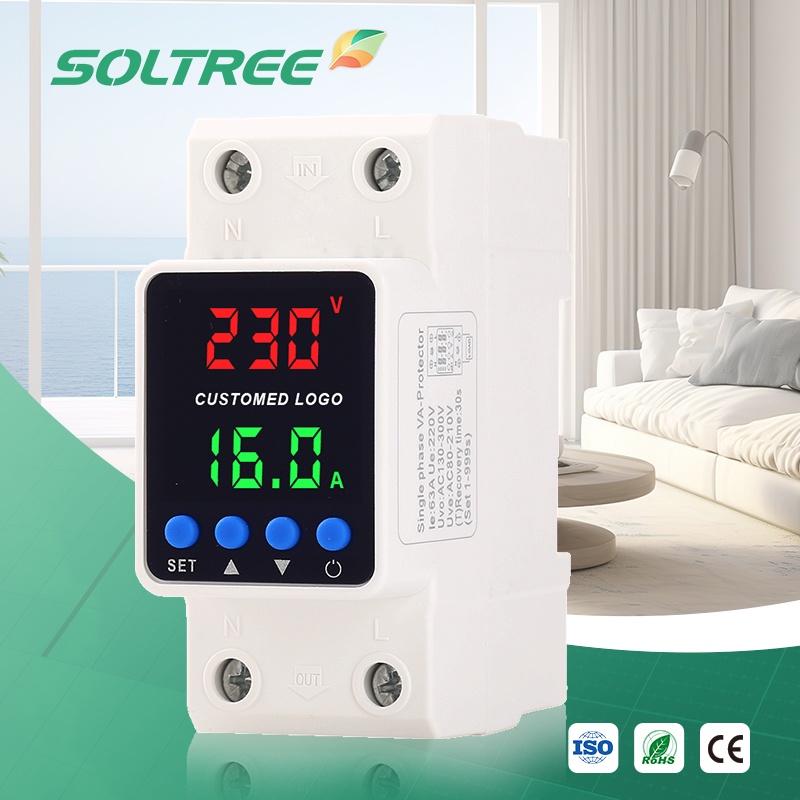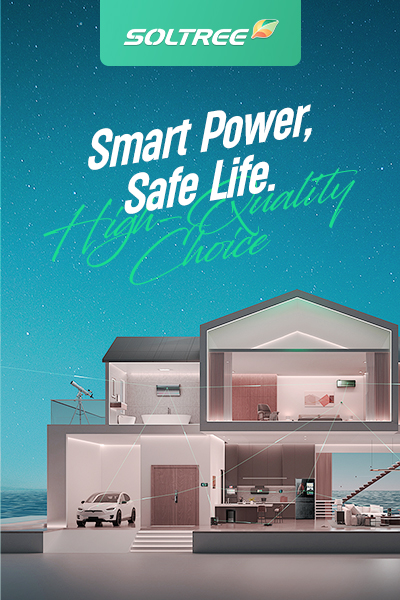A lightning strike is not usually the cause of the slow death of an expensive device like a refrigerator, air conditioner, or computer. More often than not, the problem is the long-term harm that happens when your electricity grid is unstable every day but you can’t see it.
A self-recovery overvoltage and undervoltage protector is the best way to fight this threat. But it’s easy to buy the wrong device or operate it poorly when there are so many that appear complicated and have perplexing settings.
This article will help you make sure you have all you need before you buy. We’ll tell you the five most important things you need to know to prevent frequent mistakes and find the best electrical guardian for your home.
Thing #1: It’s NOT a Surge Protector (and Why You Might Need Both)

This is the most important concept to understand, and we need to clear it up first. Confusing these two devices is the most common mistake buyers make.
The Core Difference: Slow Poison vs. Sudden Attack
There are two ways to think about the risks to your electrical system:
- A Self-Recovery Protector protects against long-term voltage problems, which are sometimes known as “slow poison.” This means long periods of high voltage (overvoltage) or low voltage (undervoltage or brownouts).
- A Surge Protective Device (SPD) protects against unexpected, intense voltage spikes (the “sudden attack”). Lightning or the switching of big industrial machines usually causes these, and they barely last a few microseconds.
| Feature | Self-Recovery Protector | Surge Protective Device (SPD) |
| Protects Against | Sustained high/low voltage | Instantaneous voltage spikes |
| Response Time | Milliseconds to Seconds | Nanoseconds |
| Action Taken | Disconnects the power | Diverts surge energy to ground |
A Layered Defense Strategy for Your Home
These devices can’t be used in place of each other; they work together as a team. You should use both for the best protection. A layered defense is the best way to secure your home. The first line of defense against outside attacks is a whole-house SPD at your main panel. The second line of defense is a self-recovery protector that keeps an eye on the health of your power supply every day.
Thing #2: How to Choose the Right Amperage (40A, 63A, 80A?)
Picking the wrong amperage is a very dangerous mistake. It’s easy to find the correct one, though.
First, check your main breaker
Find the main circuit breaker on your home’s main electrical panel. This is the big switch that turns off power to the whole house. The amperage rating of this breaker is plainly stated on it (for example, C63, 63A, or 80A).
The “Match or Go Higher” Rule
This is the one thing you need to remember: The amperage rating of your voltage protector must be the same as or higher than the rating of your primary breaker.
- If your main breaker is 63A, you should pick a protector that is either 63A or 80A.
- You should never use a 40A protector with a 63A system.
- If you pick a protector with a lesser amperage, it could slow down your electrical system and cause it to overheat or trip for no reason.
Thing #3: Understand the 3 Critical Settings (It’s Easier Than You Think)

These gadgets are smart, but you have to tell them what to do. It’s important to know what these three settings mean.
Overvoltage Value (UVO): The highest safe limit for you
This tells the device what the highest voltage it can handle is. For 220V/230V systems, a safe and usual range is 270V to 280V.
The Undervoltage Value (UVE) is the lowest level of safety for you.
This is the lowest voltage that is safe, and it is very important for keeping motors in refrigerators and air conditioners from burning out. For systems that use 220V or 230V, a safe range is 160V to 170V.
The Recovery Delay Time is the most important setting for your appliances.
This is perhaps the most important setting for keeping your equipment safe. It’s the period of time the device will wait once the power comes back on before it replenishes power. This delay makes sure that the grid is very stable and keeps compressors from becoming damaged by quick on-off cycles.
- For general electronics like TVs and PCs, a delay of 30 to 60 seconds is adequate.
- For appliances with compressors, such a fridge, AC, or freezer, it is HIGHLY RECOMMENDED to establish a delay of 180 to 300 seconds (3 to 5 minutes).
Thing #4: Know Its Best Application Scenarios
This item is helpful for everyone, but some people will get more out of it than others.
The goal is to protect the whole house
This device is usually put in after the main breaker to safeguard all of the circuits in your home, not just one outlet.
Who Needs It the Most?
- People who live in places with shaky electrical grids: This is a must-have if your lights flicker or dim a lot.
- Homes with high-end electronics: Voltage changes can hurt high-end audio systems, smart home hubs, and home theaters.
- Villas or houses that are not attached to each other: Longer supply connections are more likely to be affected by electrical interference from outside.
- Properties that are not being watched: The automatic recovery feature is especially useful for holiday homes, server rooms, or security monitoring stations since it makes sure that systems come back up after a temporary problem.
Thing #5: How to Judge Quality and Reliability
Not all protectors are the same. Here’s what to watch for.
Look for materials and certifications
- Safety Certifications: Look for basic safety certifications like CE (for the European market), which shows that the product meets basic health and safety regulations.
- Material for the house: Look for items produced with PC (polycarbonate) flame-retardant material, which is better at resisting fire than regular ABS plastic.
Look at User Reviews with a Critical Eye
Don’t only pay attention to the stars. Read in-depth reviews that talk about the installation process, how stable the product is over time, and how quickly customer support responds. These are much more useful than just saying “great product.”
Think about the brand’s reputation
Choose companies that are well-known and have been there for a while in the electrical protection industry, even if you don’t know all of them (e.g., TOMZN, SINOTIMER). The market has usually put these brands through more tests.
Conclusion
Before you click “buy,” immediately go over these five important things: how to tell it apart from an SPD, how to choose the proper amperage, how to comprehend the three main settings, how to tell if it will work for you, and how to estimate the quality of the product.
Instead of seeing this purchase as a cost, think of it as a long-term insurance policy for all the expensive appliances in your home. Now that you know this, you may choose a voltage protector with confidence that will really protect your electrical system.




